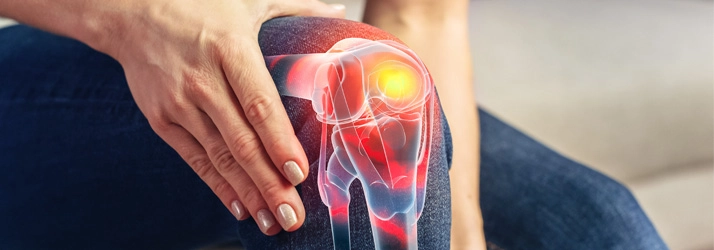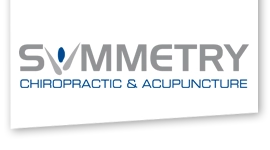Is SoftWave TRT Better Than Cortisone Shots for Pain Relief in Naperville IL?
Is SoftWave TRT Better Than Cortisone Shots for Pain Relief in Naperville IL?

When it comes to treating chronic or acute pain, patients are often faced with a range of options that promise quick relief. Among the most common are cortisone injections, which have long been used to reduce inflammation and ease discomfort. However, a newer, non-invasive technology known as SoftWave TRT (Tissue Regenerative Technology) is gaining traction as an alternative that not only targets pain but also promotes healing.
Unlike traditional pain treatments that may only mask symptoms, SoftWave TRT in Naperville IL encourages the body’s natural ability to regenerate tissue and restore function. For individuals dealing with joint pain, tendon issues, or sports-related injuries, this innovative therapy offers a different approach—one focused on long-term recovery rather than short-term relief. Understanding how it works and how it compares to more conventional methods like cortisone injections is essential for making the right decision for your health.
What Is SoftWave TRT and How Does It Work in Naperville IL?
SoftWave TRT, or Tissue Regenerative Technology, is a non-invasive therapy that uses unfocused shockwaves to stimulate the body’s natural healing processes. Unlike traditional shockwave therapies that use focused, high-intensity waves, SoftWave TRT utilizes low-intensity, broad acoustic waves that penetrate deeper into tissues without causing damage. This makes it a safer option for various types of musculoskeletal pain.
The treatment works by triggering cellular responses in damaged or inflamed tissues. When the acoustic waves are delivered to the target area, they increase blood flow, reduce inflammation, and activate stem cells to initiate repair. One of the biggest advantages of SoftWave TRT is that it not only alleviates pain but also addresses the underlying causes by supporting tissue regeneration.
Sessions typically last 5 to 15 minutes, and many patients experience noticeable improvement after just one or two treatments. Because the therapy is non-invasive, there’s no downtime required, and patients can return to their normal activities immediately after treatment. For individuals seeking a drug-free, surgery-free solution to chronic or acute pain, SoftWave TRT represents a promising option worth exploring.
Understanding Cortisone Injections and Their Role in Pain Management
Cortisone shots are a common treatment used to manage inflammation and pain associated with conditions like arthritis, tendonitis, and bursitis. These injections contain corticosteroids, which are powerful anti-inflammatory medications that help reduce swelling and discomfort in joints and soft tissues. The treatment is typically administered directly into the painful area, such as a knee, shoulder, or spine.
While cortisone shots can provide quick relief—sometimes within 24 to 48 hours—their effects are usually temporary. Pain relief can last from a few weeks to several months depending on the severity of the condition and individual response. In many cases, cortisone injections are used as part of a broader treatment plan that may include physical therapy, medication, or surgery.
However, cortisone is not without its limitations. Repeated use over time can weaken tendons, reduce bone density, and increase the risk of joint damage. As a result, most healthcare providers limit the number of injections a patient can receive in a single year. Cortisone injections may be suitable for short-term inflammation control, but they don’t address the root causes of pain or promote healing, which is a key difference from SoftWave TRT.
Comparing the Effectiveness of SoftWave TRT vs. Cortisone Shots
When evaluating SoftWave TRT and cortisone shots, it's important to look at both short-term relief and long-term outcomes. Cortisone injections often offer fast results, which makes them ideal for acute flare-ups or severe inflammation. However, this relief tends to be temporary and doesn't contribute to tissue healing. For many patients, symptoms return once the medication wears off.
In contrast, SoftWave TRT may take slightly longer to show noticeable results, but it provides a more lasting impact. By stimulating natural healing responses—such as increased circulation, cellular repair, and stem cell activation—SoftWave TRT helps improve the overall health of the treated area. Instead of just masking pain, it works on correcting the problem at its source.
Clinical experiences suggest that patients treated with SoftWave TRT often see gradual but sustainable improvements in mobility, function, and pain levels. Additionally, because it’s non-invasive and drug-free, there are fewer risks associated with long-term use. For people who want to avoid the cycle of repeat cortisone injections, SoftWave TRT presents a viable alternative with regenerative benefits.
Long-Term Benefits and Risks of Both Treatments
Long-term outcomes are crucial when considering any treatment for chronic pain. Cortisone shots offer the benefit of quick symptom relief, but their repeated use can lead to complications such as cartilage deterioration, weakened tendons, and joint instability. This is why medical guidelines typically recommend limiting cortisone injections to no more than three or four per year in a given joint.
SoftWave TRT, on the other hand, is designed to enhance the body’s natural repair mechanisms without introducing foreign substances. Over time, patients often experience improved tissue health, greater mobility, and reduced dependence on pain medications. Because it doesn’t carry the same risks as corticosteroids, SoftWave TRT can be used more frequently and as part of a long-term treatment strategy.
It’s also worth noting that SoftWave TRT doesn’t just treat symptoms—it promotes biological regeneration. While it may require more than one session to achieve optimal results, the cumulative effect is generally positive, especially for individuals dealing with chronic tendon issues or soft tissue injuries. In contrast, cortisone's long-term benefits are limited, making it more of a temporary fix than a sustainable solution.
Conditions Best Treated by SoftWave TRT
SoftWave TRT is highly versatile and can be used to treat a wide range of pain-related conditions. Its non-invasive, regenerative approach makes it suitable for patients who may not respond well to medications or invasive procedures.
Here are common conditions where SoftWave TRT has shown excellent results:
- Plantar fasciitis and heel pain
- Tendonitis (Achilles, patellar, rotator cuff)
- Tennis elbow and golfer’s elbow
- Shoulder pain and frozen shoulder
- Carpal tunnel syndrome
- Joint pain in the knees, hips, and shoulders
- Sciatica and lower back pain
- Muscle strains and sports injuries
These conditions typically involve inflammation, tissue damage, or restricted blood flow—all of which SoftWave TRT is designed to improve. If you're suffering from chronic discomfort or looking for an alternative to injections or surgery, SoftWave TRT offers a compelling, evidence-backed approach.
Side Effects: SoftWave TRT vs. Cortisone Shots
While both treatments are generally considered safe, they carry different side effect profiles that patients should understand before choosing a path forward.
SoftWave TRT side effects:
- Mild redness or swelling at the treatment site
- Temporary soreness similar to post-exercise fatigue
- Rare discomfort during treatment due to acoustic wave intensity
- No downtime or need for pain medication after treatment
Cortisone injection side effects:
- Skin thinning or discoloration around the injection site
- Increased blood sugar levels (especially for diabetics)
- Joint infection or inflammation (though rare)
- Tendon weakening or rupture with repeated use
- Flare-up pain immediately after the injection (known as cortisone flare)
The risk of serious complications is low for both treatments when administered properly. However, SoftWave TRT tends to have fewer and less severe side effects, making it a safer choice for long-term pain management in many cases.
If you’re exploring effective alternatives to cortisone injections and want a treatment that promotes real healing, consider SoftWave TRT at Symmetry Chiropractic & Acupuncture. Led by Dr. Timothy Erickson, our Naperville-based clinic specializes in non-invasive solutions for chronic pain and injury recovery.
Located in Naperville, Illinois, we’re here to help you regain your mobility, reduce pain, and restore your quality of life. Schedule your consultation today to see if SoftWave TRT is the right fit for your condition.
Book your appointment with Symmetry Chiropractic & Acupuncture and take the first step toward healing.
OFFICE HOURS
Monday
9:30am - 12:30pm
3:00pm - 6:00pm
Tuesday
9:30am - 12:30pm
3:00pm - 6:00pm
Wednesday
9:30am - 12:30pm
3:00pm - 6:00pm
Thursday
9:30am - 12:30pm
3:00pm - 6:00pm
Friday
9:30am - 12:30pm
3:00pm - 6:00pm
Saturday
9:30am - 12:30pm
Sunday
Closed
Symmetry Chiropractic & Acupuncture
3108 Illinois Rte 59 Ste 124
Naperville, IL 60564



